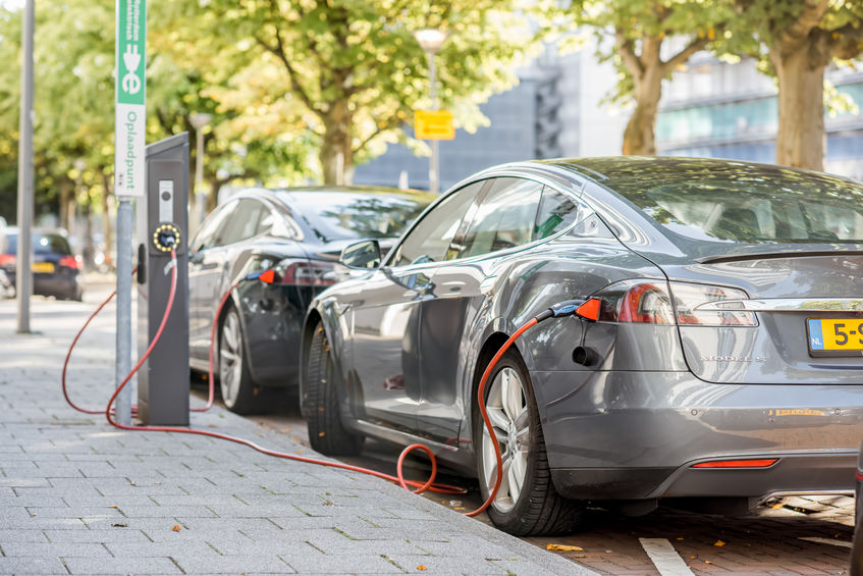
ZEV subsidies fail equity, economics, and environmental tests
Many have been saying for years that subsidies for zero emissions (electric) vehicles pose unfair burdens on working Americans. Subsidizing (and mandating) an unwanted switch away from internal combustion vehicles (ICVs) while imposing diktats that have brought higher gasoline prices and record inflation also seems out of kilter with the widely championed tenet of equity.
But the lack of equity is not even the chief reason for ending EV subsidies, according to a new Manhattan Institute report from economist Jonathan A. Lesser, president of Continental Economics. “There is no economic basis for the billions of dollars spent subsidizing [the newest zero emission vehicles].”
Lesser says that new ICVs today emit very little pollution, thanks to stringent emission standards and low-sulfur gasoline, and they will emit even less in the future. Moreover, ZEVs charged with the forecast mix of electric generation will emit more criteria air pollutants – sulfur dioxide, nitrogen oxides, and particulates – than new ICVs.
As for the dreaded (but vital) carbon dioxide, ZEVs do emit less than ICVs, but the projected reduction in CO2 emissions – less than 1 percent of total U.S. CO2 emissions – will have no measurable impact on climate, and hence no economic or environmental value.
Lesser is not the only one with data that ought to dim the ZEV subsidy lightbulb. Danish climate expert Bjorn Lomborg, president of the Copenhagen Consensus think tank, has long argued that the hype and mythologizing over ZEVs afflicts policy making and leads to costly subsidies that produce little environmental benefit. Even in ZEV-happy Norway, the typical virtue-signaling ZEV owner drives the family ICV many more miles annually.
Swedish automaker Volvo compared its gasoline-powered XC40 with its fully electric C40, taking into account extraction and processing of raw materials. Volvo found that manufacturing the C40 results in 70 percent more emissions than manufacturing the XC40 in the same factory on the same assembly line. The electric battery is the chief culprit.
If, Inside EVs suggests, the data presented by Volvo are any indication, it is quite likely that the manufacture of new ICVs is notably greener than that of all new ZEVs. The only apparent rationale for the subsidies is to favor subservient manufacturers or, perhaps, certain producers and exporters of ZEV components.
So why is President Biden, who claims to be a champion of the working class, pushing so hard for gazillions in new subsidies for ZEVs and ZEV charging stations? Subsidies in general have many downsides, notably that, by forcing the market in the “preferred” direction, they crowd out better ideas that might not yet be known to, or even thought of, by bureaucrats.
Admittedly, when Elon Musk rails against subsidies for electric vehicles, he is staring directly into the Biden Administration’s plan to provide tax incentives of up to $12,500 for union-built EVs that purchasers of his non-union vehicles would not receive. Tesla sales 2 years ago reached 200,000-vehicle threshold below which Tesla buyers could receive the current $7,500 federal credit, yet the company says it is prospering.
Musk now argues that the government should act more like a sports referee than a player on the field. Thus, he also opposes Biden’s huge layout for subsidized EV charging stations. But there may be yet another reason to deep-six yet another subsidy for wealthier EV owners, one that Musk himself once considered but that bureaucrats have not planned for.
Back in 2013, Musk unveiled a battery swap station designed about Tesla’s Model S, but few paid attention. The process proved to be complex and slow, and Musk switched its strategy to build out is Supercharger network. Other firms followed suit.
Others, notably Chinese automaker Nio, opted to develop the battery swap. Nio has completed more than 2 million battery swaps in China and is now building swapping stations in Europe. In the U.S., the battery swapping company Ample has until recently operated in “stealth” mode while raising $280 million in investment capital.
Ample founder Khaled Hassounah envisions placing battery swapping stations, each about the size of two parking spaces, at gasoline stations, grocery stores, and highway rest stops. A robotic arm will execute a “Lego-style” swap, replacing the spent battery with a freshly charged one in about 10 minutes. Ample uses small, lighter weight battery modules that can be added together to fit a wide range of vehicles.
Hassounah’s chief focus is on fleet vehicles. Not only does the battery swap system cut recharging time significantly, but fleet managers who opt in can avoid the cost of charging stations. Vehicles driven beyond the typical ZEV’s battery life may save significant sums via leasing. They also get the benefit of having the newest battery technology in their vehicles.
There are, of course, downsides. Many current and planned EV designs make the battery pack an integral part of the chassis. EV manufacturers may be disinclined to warrant vehicles with aftermarket batteries installed. And, of course, drivers can only swap out batteries where there are swapping stations. Pumping gas is still easier, quicker, and not subject to robot malfunction.
Moreover, swapping stations are not part of the Biden subsidy scheme – government rarely has any idea what the market is developing.
But isn’t that what Musk is belatedly joining in arguing? That government has no business being a player in trying to direct the evolution of American business. That means no subsidies – and no mandates, either.
Author
Duggan Flanakin is the Director of Policy Research at the Committee For A Constructive Tomorrow. A former Senior Fellow with the Texas Public Policy Foundation, Mr. Flanakin authored definitive works on the creation of the Texas Commission on Environmental Quality and on environmental education in Texas. A brief history of his multifaceted career appears in his book, “Infinite Galaxies: Poems from the Dugout.”
From cfact.org